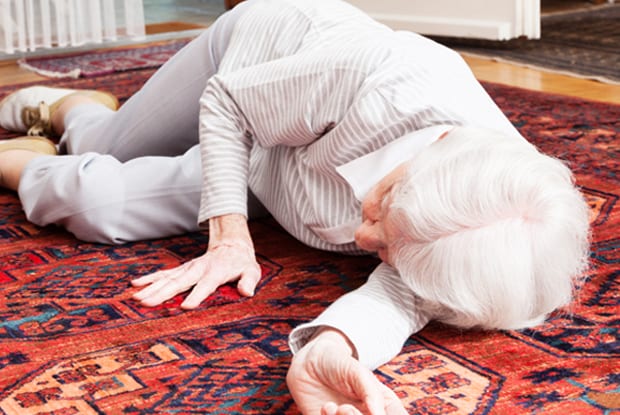
Falling is a serious matter. As many as one in three elderly Australians fall each year, with one in ten of these suffering multiple falls and up to thirty percent requiring medical attention.
The rates are even higher in hospitals and aged care facilities. Falls can affect health, well-being and quality of life. By preventing them, we can prevent injury, maintain independence and preserve function.
Falls can lead to head injury, hip or wrist fractures and significant lacerations. But even if the injury is minor the impact may not be. A fall can affect confidence and decrease mobility so that people become withdrawn and socially isolated. Evidence suggests that falls can lead to earlier need for residential care and also, sadly, to an earlier death.
The Government has set targets to reduce fall related deaths and hospitalisations and it is recognised as a priority under the National Injury Prevention Plan but the figures suggest that elderly people continue to fall at around the same rate. With an aging population, this means that the actual numbers are increasing. Are we doing all we can to safeguard the elderly, frail and vulnerable?
As a physio that works with the elderly I’ve seen what a difference targeted care can make. Individual physiotherapy assessments and a specific program of exercises to improve balance, strength and mobility can really reduce fall frequency. This can be augmented by specifically designed group exercise sessions. Research has confirmed that regular exercise classes can be a cost-effective way of improving fitness and function as well as decreasing injuries from falls. Thai Chi can be particularly beneficial, with noticeably improved body awareness and core stability and a demonstrably reduced risk of fractures.
However, even as physio who is passionate about what we do and the difference we can make, I appreciate that to prevent falls we need a multi-factorial approach. People fall for a combination of reasons: unsteadiness, an unfamiliar environment, pain, poor vision, ill-fitting or inappropriate footwear or being drowsy due to sedative medication. To protect the elderly under our care, we need to properly assess each individual at risk, identify any problems and create a strategy that responds to their needs. If someone has already fallen, we need to respond rapidly. A post-fall assessment and management program should be a priority to prevent further accidents or injuries.
Working together as a multi-disciplinary team we can reduce the risk of falls. It’s important to review medication and decrease psychotropic or hypnotic drugs if possible. It’s also worth considering calcium and vitamin D supplementation. We should modify the environment both at home and in residential care so that there are fewer hazards, provide appropriate mobility aids and ensure any optical prescriptions are up to date. Let’s face it there’s no point in devising complex programs to boost balance and proprioception if the soles of an individual’s shoes are slippery or if the arthritis in their hands makes it hard to tie their shoelaces.
As physios we are an essential part of the team, identifying risk, planning and implementing care to increase strength, steadiness and mobility. We can and do prevent and respond to falls both in the community and in residential care.
So, what innovative techniques can we add to our tried and tested therapeutic approach? Research in New Zealand showed that using vibration training could reduce the fall profile for our aged patients. I think technology is going to have an increasing impact. Monitors, sensors and smart home technology could be useful for preventing falls as well as identifying and responding quickly to those who have fallen, although the research is mixed as to its efficacy. I was also interested to read a study using the Nintendo Wii in the community to improve balance, confidence and function. With people across the country becoming more and more inactive could this be one way of making a difference?
I believe we need to act early, encourage active ageing and make changes across the aged community to make a real difference. Let’s not wait until our elderly clients have fractured their femurs or developed sub-dural haematomas before responding. By making exercise programs accessible to all, ensuring excellent fall prevention advice is widely available and identifying those at particular risk we can improve health, well being and agility and prevent falls for all elderly Australians.